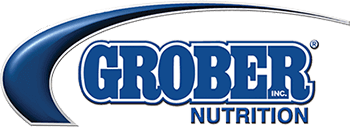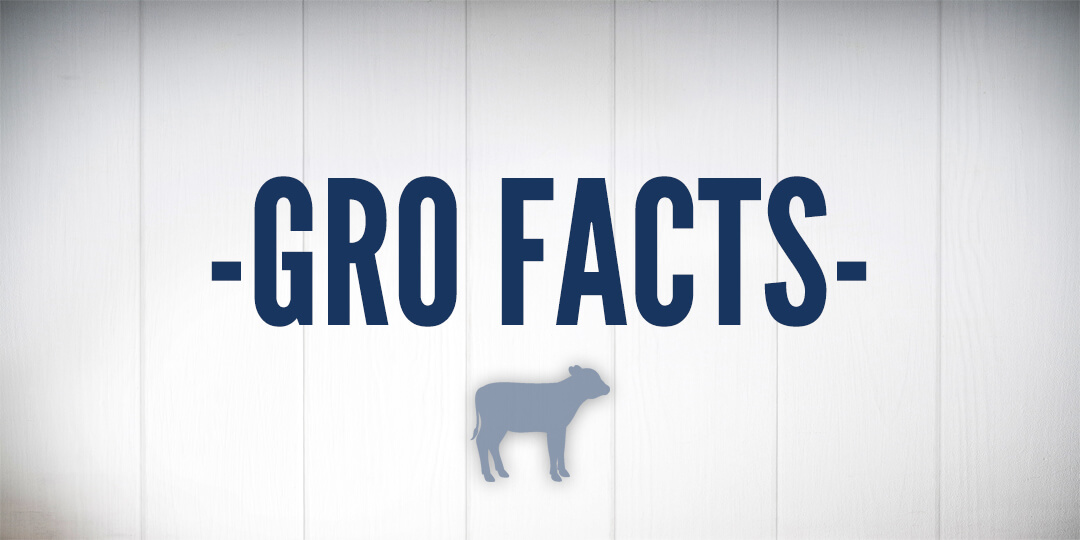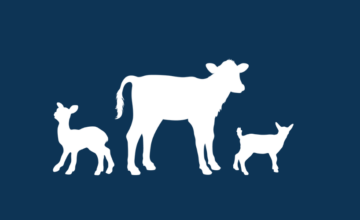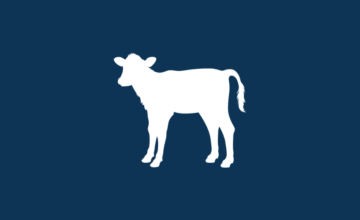Calf Winter Feeding
- Nov 04, 2009
- By Grober Nutrition
- In Canada
Understanding the basic concepts of growth helps improve calf and heifer management. Early postnatal growth is the most efficient time to develop skeletal growth, muscle growth, deposit protein and attain the highest feed efficiency. Mammary development can be enhanced by liquid (milk) feed intake prior to weaning (Brown et al, 2002). Calf raisers are advised to assess and adapt their feeding practices to ensure adequate growth while maximizing economic benefits. Winter-feeding in cold climatic conditions requires additional attention to ensure that the young calf is provided with sufficient nutrients for maintenance and for growth expectations.
| Age calf (days) | Lower critical Temperature ºC |
| 1 | 13.4 |
| 10 | 10.8 |
| 20 | 8.4 |
| 30 | 6.4 |
The young calf has limited reserves of energy when exposed to temperatures below the lower critical temperature for extended periods of time. These reserves are quickly depleted in approximately 18 hours for the newborn calf (Okamoto et al, 1986). Research, under controlled conditions with adequate bedding and dry conditions, indicate that calves housed at -4oC require about 30% more calories for maintenance. This number will increase as temperature goes down, humidity rises and calves are subject to wet bedding. The effect of cold stress on potential gain (g/d) for a 45kg calf when they are fed 12.5% DM or 125g of powder in a litre of water.
| environment | Excel 26/18 | Excel 26/18 | HP 22/17 | HP 22/17 | Whole milk | Whole Milk |
| temp °C | 6 litres/day | 8litres/day | 6 litres/day | 8 litres/day | 6 litres/day | 8 litres/day |
| 20 | 610 | 930 | 600 | 910 | 750 | 1.100 |
| 10 | 470 | 810 | 460 | 790 | 620 | 980 |
| 0 | 330 | 680 | 320 | 660 | 480 | 860 |
| -10 | 140 | 520 | 120 | 500 | 310 | 710 |
| -20 | weight loss | 400 | weight loss | 390 | 180 | 600 |
The effect of cold stress on potential gain (g/d) for a 45kg calf when they are fed 15% DM or 150g of powder in a litre of water.
| environment | Excel 26/18 | Excel 26/18 | HP 22/17 | HP 22/17 |
| temp °C | 6 litres/day | 8 litres/day | 6 litres/day | 8 litres/day |
| 20 | 800 | 1,170 | 790 | 1,150 |
| -10 | 680 | 1.050 | 660 | 1,030 |
| 0 | 540 | 930 | 530 | 910 |
| -10 | 380 | 780 | 360 | 760 |
| -20 | 250 | 680 | 240 | 660 |
When a calf falls under negative energy balance, immune status can be easily compromised and the calf becomes susceptible to bacterial and viral infections. To maintain the same amount of gain in colder environments increase the amount of powder fed to calves on average by 7.7g per °C below their critical temperature. Fat and its source are important in milk replacers for young calves to ensure a high absorption and to best meet their energy needs especially in cold stress conditions. Young animals require highly digestible, human grade fats and oils, with a correct fatty acid profile and saturation structure to provide a profile similar to milk fat. This will help to maximize growth potential and avoid ‘fatty faeces’. According to research done by Drackley (2000), protein requirement is a function of the energy allowable gain. Correct mixing of the milk replacer and temperature of water used will provide a more uniform blend and low fat particle size (<1.5 microns). These factors encourage optimum absorption capacity by the young calf. Effect of concentrate feeding: Calves utilize energy less efficiently from starter feeds than milk replacer because carbohydrate and protein in the starter must be fermented in the developing rumen prior to digestion by the calf. Feeding more of an appropriately balanced milk replacer diet to meet requirements for both energy and protein allowable gain appears to be the most systematic solution to cold stress challenge.
Ways to help the young calf under conditions of cold stress:
- Ensure that the calf has access to dry, well-bedded shelter that provides protection from wind and is free from drafts.
- Provide extra energy through its feed by increasing the amount of milk replacer being fed.
- Observe the weather forecast so that changes can be introduced gradually so that stomach upset (bloating) can be avoided.
These values are approximate based on the information in NRC, 2001.
| ………………. | Grams/day of additional milk replacer | Additional whole milk |
| Temp C | 0-3 wk | >3wk | 0-3 wk | >3 wk |
| 20 | 0 | 0 | 0 | 0 |
| 15 | 39 | 0 | 34 | 0 |
| 10 | 77 | 0 | 67 | 0 |
| 5 | 116 | 39 | 101 | 34 |
| 0 | 154 | 77 | 134 | 67 |
| -5 | 193 | 116 | 168 | 101 |
| -10 | 231 | 154 | 201 | 134 |
| -15 | 270 | 193 | 235 | 168 |
| -20 | 308 | 231 | 268 | 201 |
| -25 | 347 | 270 | 302 | 235 |
| -30 | 385 | 308 | 335 | 268 |
Feeding the extra milk replacer powder:
- The extra amount can and should be split into two or more meals
- It can be added on top of a milk meal
Grober Nutrition
Recent Posts
Tags
Archives
- October 2024
- July 2024
- May 2024
- April 2024
- January 2024
- December 2023
- October 2023
- September 2023
- August 2023
- June 2023
- December 2022
- November 2022
- October 2022
- August 2022
- July 2022
- June 2022
- May 2022
- April 2022
- March 2022
- February 2022
- January 2022
- August 2021
- February 2021
- September 2020
- June 2020
- April 2020
- May 2017
- April 2017
- October 2016
- September 2016
- August 2016
- March 2016
- March 2015
- January 2015
- December 2014
- December 2013
- September 2013
- May 2013
- January 2013
- December 2012
- November 2012
- March 2012
- March 2011
- February 2011
- November 2010
- August 2010
- December 2009
- November 2009
- March 2009















